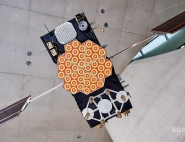Mission
Basic principle
One of the fundamental principles guaranteed by the Cospas-Sarsat programme is that when a 406-MHz distress beacon is activated, the system responds free of charge and on a non-discriminatory basis.
Cospas-Sarsat distress beacons can be activated anywhere in the world and the level of service provided by the programme is the same. This service is to be distinguished from search-and-rescue operations conducted by SAR teams, which remain under the responsibility of each nation.
Distress beacons are designed for boats (Emergency Position Indicating Radio-Beacons or EPIRBs), aircraft (Emergency Locator Transmitters or ELTs) and for use on land or for multipurpose applications.
A modernized and more effective programme
With the MEOSAR system using satellites in medium Earth orbit that entered service end 2016, the time needed to precisely locate beacons was greatly reduced and positioning became more accurate. Today, very few SAR operations are conducted without recourse to MEOSAR.
New features are now also being added to Cospas-Sarsat beacons:
- thanks to the SAR Galileo programme, a Return Link function operational since January 2020 sends an acknowledgement to distress callers that their signal has been received by a mission control centre
- a new second generation of beacons enabling even more accurate location is poised to come into service
- a special ELT(DT) (for Distress Tracking) will be carried by aircraft from 2023: its main feature will be the ability to send an alert before a plane crashes, so that its trajectory can be plotted, thus making the task of SAR teams much easier

